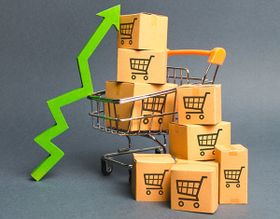Shopify Automation Community
Community for e-commerce sellers to share advice about managing inventory and automating your Shopify store
Recent Questions
How to create quantity limits on Shopify?
Hi there. I am trying to set a limit on the quantity of a product that a customer can purchase on my Shopify store. Something likeAsked a year ago
4
Answers
989
Views
How do I sort by "featured collection" on Shopify?
I want to change the order of my Shopify products and sort them by featured collection. Can anyone please tell me how to do this?Asked 2 years ago
2
Answers
1.6k
Views
How can I calculate the impact of free shipping on my average order value and overall sales?
How can I calculate the impact of free shipping on my average order value and overall sales?Asked a year ago
1
Answers
1.4k
Views
Free shipping cost discount options on Shopify? What are the best options?
Should I absorb the entire shipping cost, or should I share it with the customer. For example something like "free shipping on ordAsked a year ago
1
Answers
1.5k
Views
How to prevent customers from taking advantage of BOGO deals by returning one of the items for a refund?
What strategies can I use to prevent customers from taking advantage of the BOGO deal by returning one of the items for a refund?Asked a year ago
1
Answers
956
Views
Can I combine BOGO discounts with other promotions, like free shipping or percentage-off coupons on Shopify?
Can I combine BOGO discounts with other promotions, like free shipping or percentage-off coupons on Shopify?Asked a year ago
1
Answers
758
Views
What's the best way to calculate the potential impact of BOGO discounts on my profit margins?
What's the best way to calculate the potential impact of BOGO discounts on my profit margins?Asked a year ago
1
Answers
879
Views
Are there AI solutions that can help me predict customer demand and plan for seasonal trends?
Are there AI solutions that can help me predict customer demand and plan for seasonal trends? Asked a year ago
1
Answers
1.2k
Views
What is a good CMS for Shopify?
Can anyone recommend a good content management system for Shopify?Asked a year ago
1
Answers
979
Views
How to delete development store on Shopify?
How can I delete my development store on Shopify and if I do so, is it gone permanently or can I recover it in some way?Asked a year ago
1
Answers
1.2k
Views

